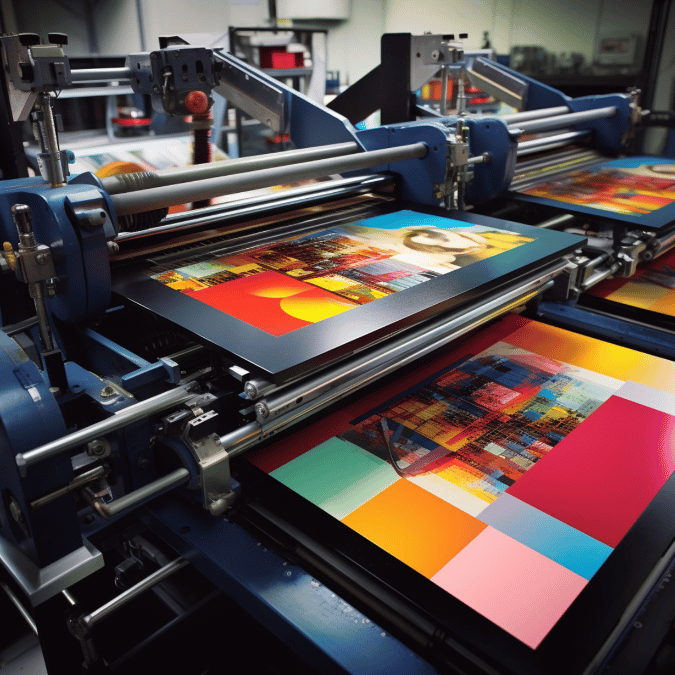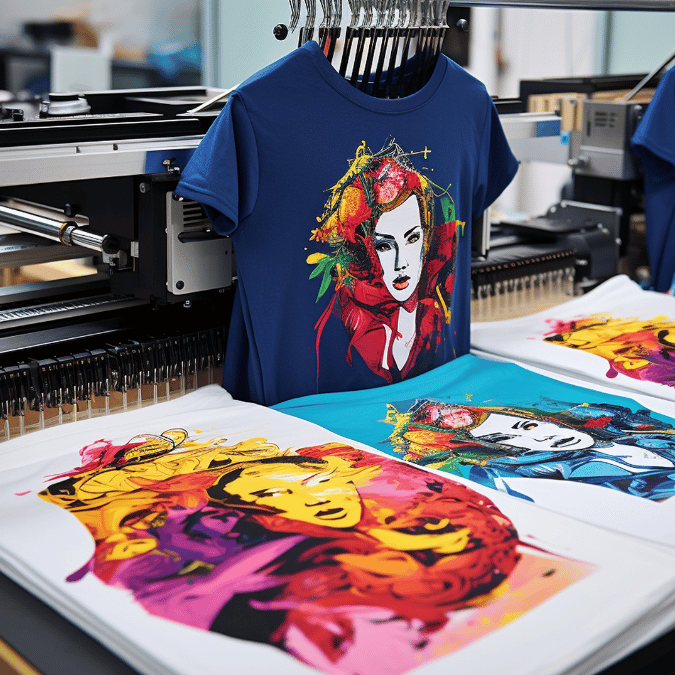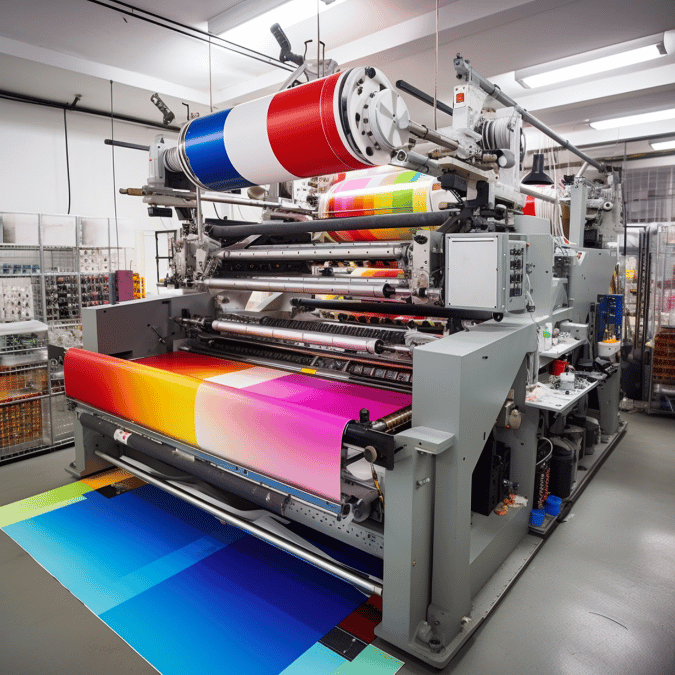In an increasingly digital era, where businesses have shifted their focus to online marketing, social media, and paperless solutions, you might wonder if there’s still room for a traditional printing business to thrive. The truth is, while digital solutions are more prominent, the printing business continues to offer significant opportunities. The demand for high-quality printed materials, ranging from marketing collateral to custom merchandise, remains strong across various industries. Let’s explore how the printing business can carve out its space in today’s marketplace and why it still holds valuable potential outside the digital world.
The Evolution of the Printing Business
The printing business has a long and rich history, dating back to the invention of the printing press by Johannes Gutenberg in the 15th century. This innovation revolutionized the way information was disseminated and set the stage for modern printing practices. Fast forward to today, the printing industry has evolved with advancements in technology, allowing for more efficient and precise printing processes. From offset printing to digital printing, screen printing, and 3D printing, the industry has diversified significantly.

However, despite the digital transformation of businesses, the printing business has maintained its relevance. Physical print materials still play a vital role in many areas, from advertising and brand visibility to product packaging and personal expression. This article will dive deeper into the different areas of opportunity within the printing business that continue to thrive, even in a digital age.
The printing industry, though often perceived as waning in the age of digital media, continues to thrive globally and within the Philippines. According to Camainks, despite the rise of digital publishing, the Philippine printing sector still contributed significantly to the economy, especially in areas like packaging and publishing, with the industry’s manufacturing value reaching approximately 19.5 billion pesos in 2017 (Camainks).
The Continued Demand for Printed Materials
The printing business may seem less prevalent compared to its digital counterparts, but there are numerous sectors where physical printed materials are indispensable. Let’s look at some key areas where print continues to dominate:
1. Marketing and Advertising Materials
Businesses still heavily rely on printed marketing materials to promote their products and services. Brochures, flyers, business cards, banners, and posters are all essential tools for brand awareness, especially at events, trade shows, or local businesses. Even though many companies have a strong digital presence, tangible printed materials create a lasting impression. These materials are often considered more personal and are kept for longer periods, providing businesses with an extended brand presence. For a printing business, this is an opportunity to cater to corporate clients looking for high-quality, professional-grade marketing collateral.
2. Custom Merchandise and Promotional Items
Another growing sector in the printing business is custom merchandise and promotional items. Companies frequently invest in branded items like T-shirts, mugs, pens, and tote bags. These items not only promote a brand but also serve as functional tools for consumers. Whether it’s through screen printing, embroidery, or sublimation printing, offering customizable products is a lucrative avenue for any printing business.

3. Packaging Solutions
Product packaging is a significant area where the printing business excels. From simple labels to elaborate packaging designs, companies across all industries need custom packaging to differentiate their products on store shelves. With the rise of e-commerce, the demand for custom packaging has grown exponentially. A well-executed packaging design can enhance the customer experience, building brand loyalty and driving repeat business. For printing companies that specialize in packaging solutions, this is an opportunity to collaborate with brands seeking unique, high-quality packaging.
4. Books, Magazines, and Publications
Despite the rise of e-books and online publications, printed books, magazines, and other forms of print media remain popular. Many people prefer the tactile experience of reading physical books or leafing through a glossy magazine. For the printing business, this offers a niche market catering to self-published authors, independent publishers, and specialty magazines. Printing books in small batches or on-demand can be a profitable service, allowing businesses to cater to specific client needs without the overhead of large-scale printing runs.
5. Event and Special Occasion Printing
Weddings, corporate events, and personal celebrations all require printed materials, such as invitations, banners, signage, and more. The printing business that specializes in custom event-related products can capitalize on this market. Event organizers, party planners, and even individuals are constantly seeking high-quality printed items to create memorable experiences. By offering customization, a printing business can provide unique products that cater to the specific needs of the occasion.
The Role of Innovation in the Printing Business
To stay competitive in a world dominated by digital solutions, printing businesses must embrace innovation. Traditional printing methods are still relevant, but the integration of modern technology can provide a competitive edge. Here are some ways innovation is playing a role in the growth of the printing business:
1. Eco-Friendly Printing Solutions
With growing awareness around environmental issues, many consumers and businesses are seeking eco-friendly alternatives. Printing businesses that offer sustainable printing solutions, such as using recycled paper or eco-friendly inks, are attracting environmentally conscious clients. Going green in the printing business not only helps the environment but also opens up a new customer base.
2. 3D Printing Technology
3D printing, once considered a novelty, has become an integral part of the printing industry. While traditional printing focuses on 2D products, 3D printing allows for the creation of tangible objects, offering new possibilities for industries like manufacturing, healthcare, and education. For businesses looking to expand their services, investing in 3D printing technology can be a game-changer.

3. Personalization and On-Demand Printing
Personalization is a significant trend in today’s market, and the printing business can capitalize on it by offering custom solutions. From personalized wedding invitations to one-of-a-kind business cards, customers are willing to pay a premium for unique, customized products. Furthermore, on-demand printing services allow printing businesses to cater to clients with small-batch needs, reducing waste and increasing efficiency.
Overcoming Challenges in the Printing Business
While the printing business offers numerous opportunities, it is not without its challenges. One of the primary challenges is the shift toward digital communication, which has reduced the overall demand for certain print materials. However, savvy printing businesses are adapting by diversifying their services and embracing technology.
Another challenge is competition. The printing industry is highly competitive, with both small local shops and large-scale printing companies vying for the same market. To stand out, a printing business must focus on providing high-quality services, exceptional customer care, and fast turnaround times. Specializing in a niche, such as eco-friendly printing or luxury packaging, can also help differentiate a printing business from competitors.

Despite the growing dominance of digital solutions, the printing business remains a viable and profitable industry. By exploring opportunities outside the digital world, such as marketing materials, packaging, custom merchandise, and special event printing, the printing business can continue to thrive. Embracing innovation, sustainability, and personalization will be key to standing out in a competitive market. With the right approach, the printing business offers endless possibilities in both traditional and modern contexts.
When starting a printing business in the Philippines, building relationships with dependable suppliers is crucial to ensuring a steady flow of materials and equipment. Based on our previous article, finding local suppliers involves researching credible directories, attending trade fairs, and networking with industry professionals to locate the best deals and quality products. For a detailed guide, check our article here.”






